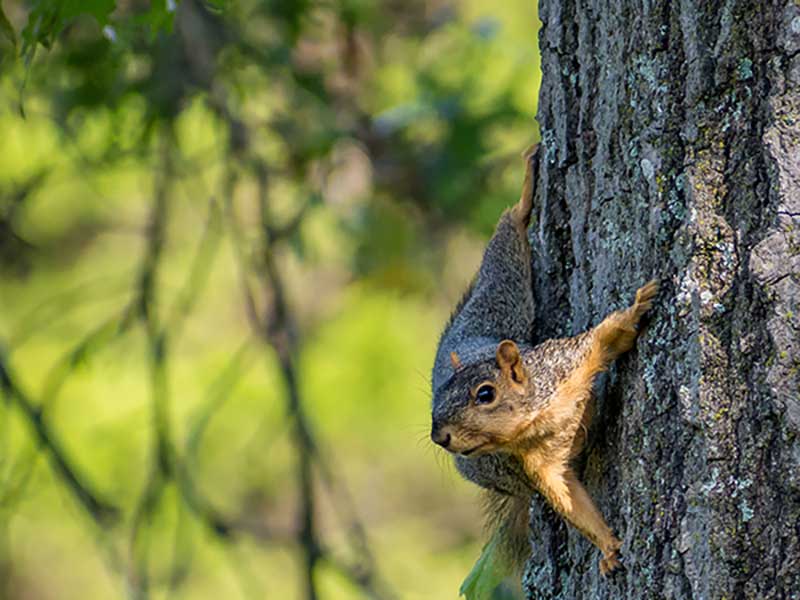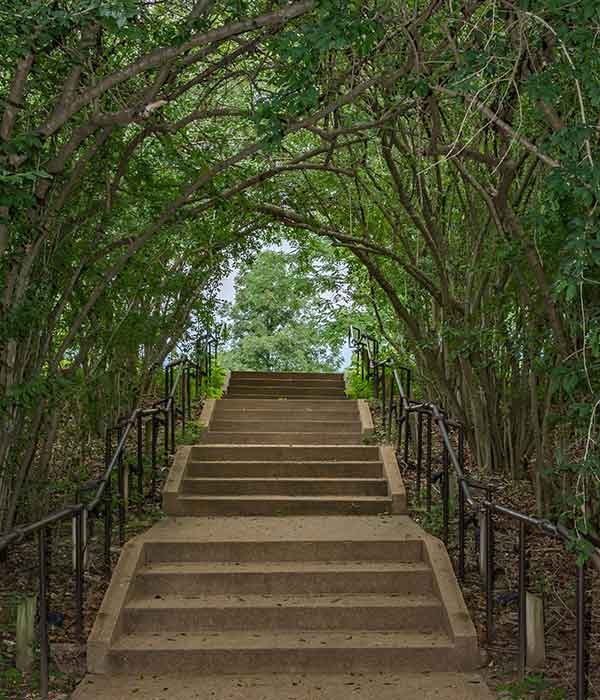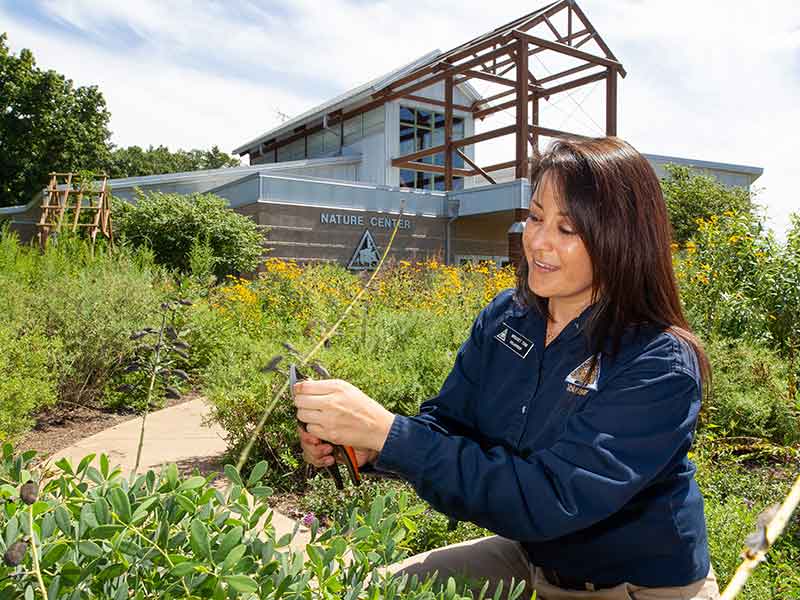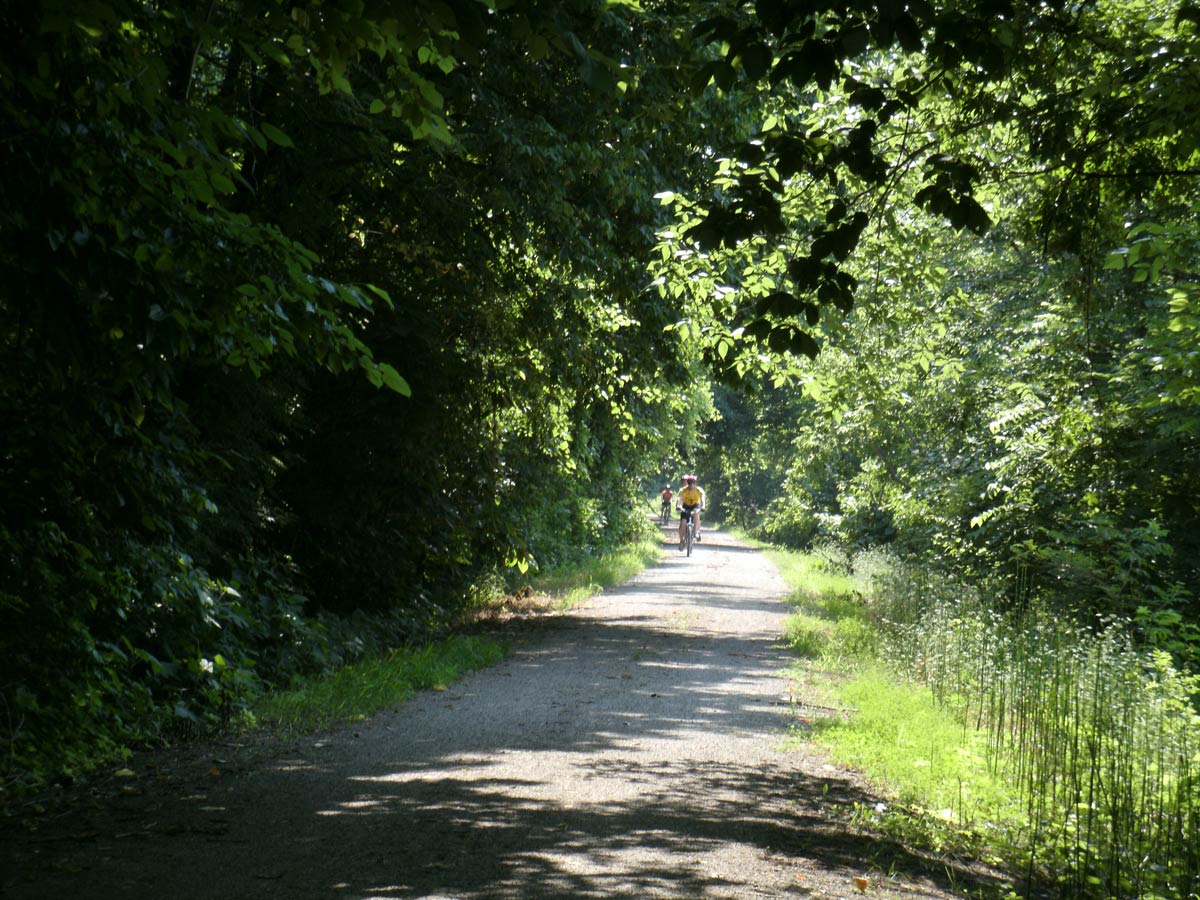This article is presented in partnership with Missouri Botanical Garden.
Trees have been an important part of the work of the Missouri Botanical Garden since it was founded in 1859, and nowhere is that more evident that at the Garden’s 2,400-acre Shaw Nature Reserve in Gray Summit, Missouri.
The lands that would become the Reserve were first protected in 1925 in order to secure a site outside the injurious impacts of smoke in St. Louis. Trees in the city, especially conifers, suffered extensive damage from pollution from the burning of soft coal. A Pinetum, a collection of conifers from around the globe, was established early on as part of tree conservation efforts.
Upon entering Shaw Nature Reserve today, visitors experience prairies and small conifer groves, remnants of the once actively curated Pinetum. At the center of the Pinetum is the four-acre Cypress Lake, which is ringed by soaring bald cypress reflecting on the water. As the non-native conifers have been removed, native short-leaf pines have been planted and native broadleaf trees, grasses, and wildflowers have been promoted in the area. In spring, thousands of daffodils bloom throughout the Pinetum, to be followed by blazing star, butterfly milkweed, and other native wildflowers. Many species of birds are attracted by the conifers, as well as gray and red fox squirrels. A profusion of insects inhabit the prairies. Cypress Lake teems with several species of frogs, fish, turtles, water snakes, crayfish, and minute and microscopic water life.

Woodland habitats comprised of 80 tree species make up the majority of Shaw Nature Reserve’s 2,400 acres. Eighteen species of oak and six species of hickory trees dominate these habitats. White-tailed deer and gray and fox squirrels are common mammals, and as well as the largest bird, the wild turkey, since an important part of its diet is acorns and hickory nuts. Coyotes and bobcats are present but infrequently encountered. Raccoons, opossums and striped skunk are also members of this community, but are seldom seen because of their nocturnal habits. The varied topography, diversity of trees, native wildflowers, and wildlife make this area popular with both the serious nature student and those who enjoy an outing in a beautiful and quiet natural area.
The bottomland forest at Shaw Nature Reserve encompasses 160 acres in the flood plain of the Meramec River. Characteristic trees in this area are sycamore, cottonwood, silver maple, elm, and box elder. Masses of bluebells, trout lily, blue phlox, and false rue anemone make a spectacular display in spring. The bottomland forest can be reached by parking at the Trail House and walking down the two-and-a-half-mile loop Goddard River Trail.

Across the forests of the Reserve, conservation practices are used to control invasive species like eastern red cedar. The eastern red cedar rapidly colonizes and takes over recently opened-up habitats. Shaw Nature Reserve had a long history, previous to the purchase of the property by the Missouri Botanical Garden in 1925, of logging, grazing, and agriculture. The many cedars here are a sign of past ecological disturbance. The thinning of cedar stands at the Reserve during winter months is an ecological management tool that enables the Garden to regain the rugged beauty and biological richness of the Reserve’s area of natural vegetation in the sea of agriculture and development that surrounds it.
To enjoy the natural surroundings and wooded areas at the Reserve, there are 17 miles of hiking trails from which to choose. They range in length from half a mile to 2.5 miles. Along the way, guests can visit a historic home, Cypress Lake, native plant gardens, rocky glades, prairies, and of course, the Shaw Nature Reserve’s expansive forests.
Related Posts
Volunteering in Nature
The Missouri Department of Conservation conserves and protects the outdoors and offers various volunteer opportunities around the state.
Nature-bathing in Columbia
You can get away without going far when you explore the trails of Columbia.


